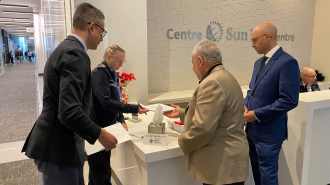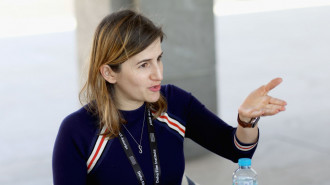Inside Kashmir's last leper colony
Established by British missionaries in the 1890s to isolate and contain the victims of leprosy; a disease which had at that time gripped the region. Since a permanent treatment was not then known, victims in this area were taken away from family and friends and housed in a former Mughal fort on an island.
The colony - which in the beginning housed only people affected with leprosy - is now home to children and grandchildren of victims. Due to the stigma still associated with the disease, younger generations of lepers have not found acceptance among wider society.
Employed by Kashmir's Directorate of Health Services, the staffers who work at the colony hospital include two doctors, two nursing orderlies and two medical assistants.
There is also a hairdresser, the third person from his family - after his father and grandfather - to have served the colony. There is a cleaner whose family has also served the colony for three generations, and a baba - or caretaker - who is also the third generation from his family to serve here.
The stigma held by society about this disease remains deeply rooted.
Leprosy is not as highly contagious as once believed and infection only spreads due to droplets from the sneezes of lepromatous patients whose nasal mucosa is highly infected.
What's more, leprosy is no longer contagious after just one monthly treatment with a multi-drug combination of antibiotics. But public education around the disease has not been able to dissuade people here from believing that it spreads merely by touching victims or that it is some form of divine punishment for some grave sin.
Due to this stigmatisation, the lepers and their families have not been accepted. But they have found home and hope with the carers of their colony.
All photos by Sharafat Ali
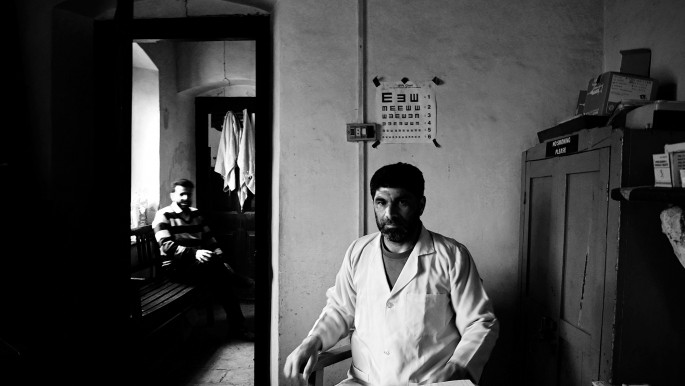
Abdul Majeed Malik, now 43, was born and raised in a leper family of this colony. In the 1970s, both of his parents were diagnosed with leprosy. In 2003, Majeed was appointed nursing orderly in the colony's hospital - though he lives outside the colony.
"This is my responsibility, to look after the people of my own community," he tells us. "If I don't, then who else will?" Children of lepers who get government jobs have to relocate outside of the colony.
Ghulam Mohammad Dhobi runs the laundry department of the colony. The 53-year-old washes the clothes and bedding of 89 leper patients each day. Before Ghulam, his uncle, Ghulam Ahmad Dhobi, used to perform the laundry duties, but after his death in 1990, Ghulam was appointed in his place. Ghulam is one of the oldest employees here.
"My patients have survived and fought the disease courageously; they're more than my family. We provide everything to them - whatever is required we recommend that to higher authorities for the benefit of patients," says 52-year-old Dr Yasmin, who has worked in the hospital for the past four years.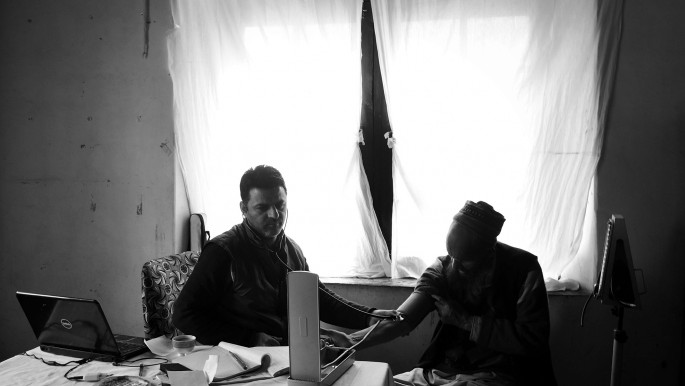
"Outsiders should understand the fact that people here are no longer contagious," says 42-year-old Dr Sajad while attending to a patient for his weekly check-up.
The infectious disease has been contained and is no longer considered highly contagious medically and spreads only by nasal droplets when sneezing. Rare routes of transmission are from soil transmission and insect bites.
The authorities provides free rations to leprosy patients and their children younger than 18 years. The ration includes 11kgs of rice per person per month, 750 grams of vegetables and two traditional breads per day, cooking oil, milk and other essential commodities.
Most of the lepers are above 60 years of age and are suffering from a variety of ailments including blindness and paralysis. Leprosy is mostly a disease of the peripheral nerves and mucosa of the upper respiratory tract; skin lesions (light or dark patches) are the primary external symptom.
If left untreated, leprosy can progress and cause permanent damage to the skin, nerves, limbs and eyes. Due to not catching symptoms early enough, many of the patients have deformed limbs and some need the help of crutches to walk. 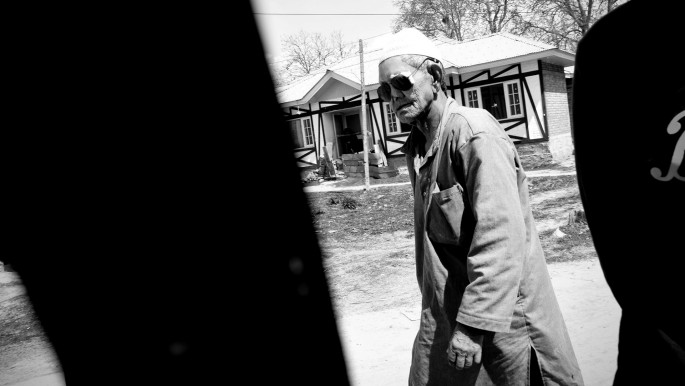
There is a deep-rooted perception prevalent in society which had led to a general stigma about the disease and its victims. As a result, society has not accepted these patients or their families.
In some rare cases, patients have been disowned by their families. This has had an obvious effect on patients' mental wellbeing.
"I feel privileged to be part of this noble institution," says 40-year-old Mohammad Shafi Mir.
"I shave and dress the hair of patients who are living in the leper colony. After my grandfather, Ghulam Rasool Mir, and father, Ghulam Mohammad Mir, who worked here as hairdressers, I took on this responsibility after my father's death." Shafi has served the colony here for the past 20 years.
Basher Ahmad Zargar [right] hails from the Kulgam area of Noorabad, and first visited the leper hospital in 1975.
Initially Zargar stayed only for 11 months and returned home. After the disease ate away at his hands and feet, his condition worsened, his family decided to permanently move Zargar to the leper colony, where he started to live with other patients.
Zargar was allotted new quarters, provided by the government, in 2015.
"I used to cook for myself but with the passage of time my physical ability weakened and I am unable to cook - but thankfully my neighbours in colony help me and cook food for me," said Zargar.
Zargar, now 63, never married - unlike many other patients who found life partners inside the colony.
Nursing orderlies work tirelessly to look after their patients.
"If we are living our lives happily even after suffering from the leprosy it's because of the Almighty and the employees who are taking care of us from the very first day," says 80-year-old patient Nizam-ud-Din.
These two orderlies work inside the hospital and make sure the facility caters to the needs of all patients.
Sharafat Ali is a photographer based in Kashmir, currently freelancing with various organisations and studying at Aks School of Photography and Visual Journalism. Follow him on Twitter: @alisharafat10
Rouf Sadiq Tantray is a photoblogger and currently works as photo editor at withkashmir.org. Follow him on Twitter: @rouftantrays
![Kashmir leper colony 7 [Sharafat Ali] Kashmir leper colony 7 [Sharafat Ali]](/sites/default/files/styles/image_345x195/public/media/images/EC67C994-0650-4FF4-8969-EA782F4C5DD1.jpg?h=d1cb525d&itok=qSlq_WdM)
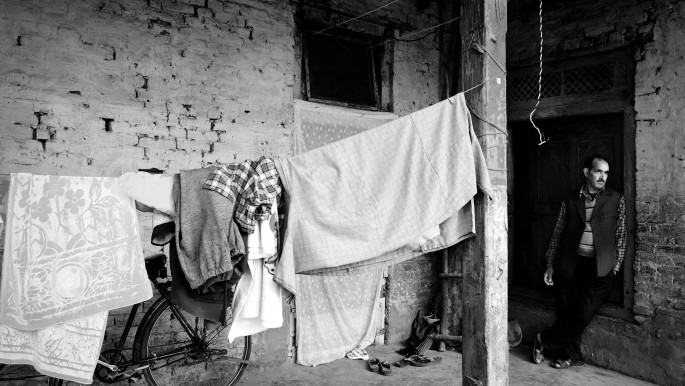
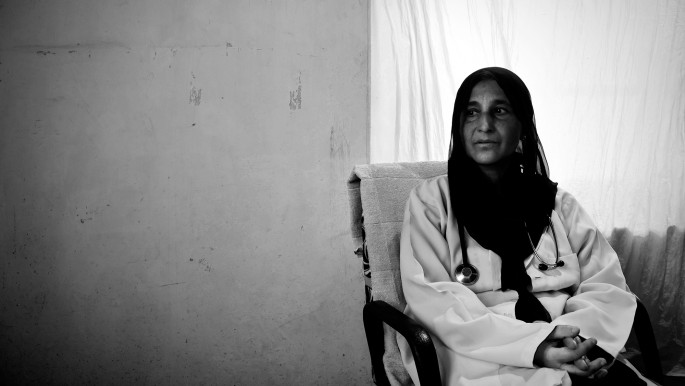
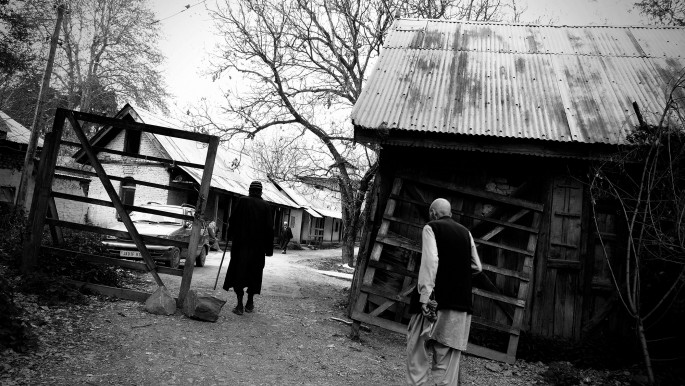
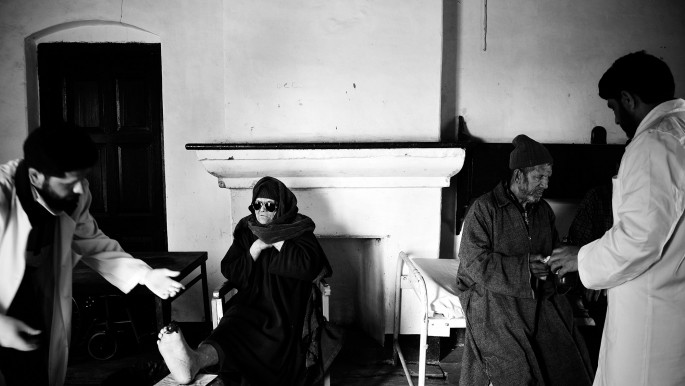
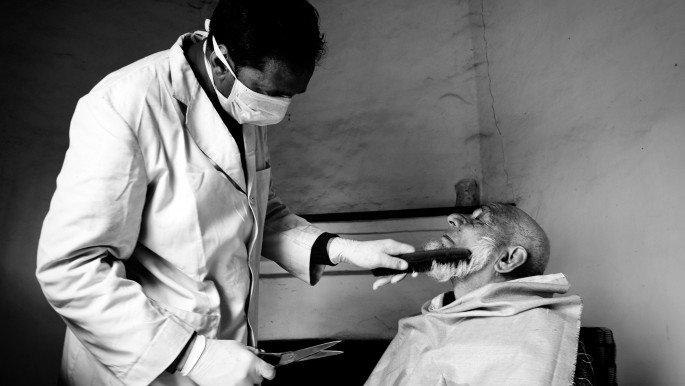
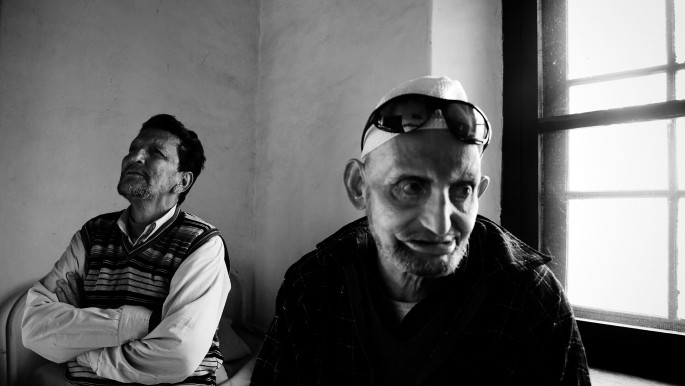
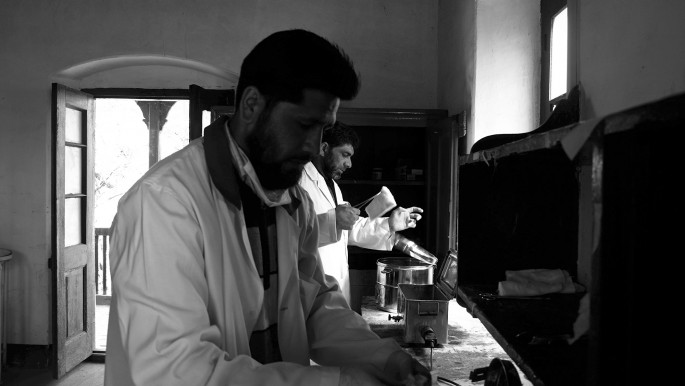






 Follow the Middle East's top stories in English at The New Arab on Google News
Follow the Middle East's top stories in English at The New Arab on Google News

